Efficiency Is the Mission

Maximizing fleet productivity starts with getting the most out of your vehicles. To a large degree, the best approach is driven by the type of fleet you operate and its drive cycles. In many cases, you may find that different techniques are required for individual groups of trucks within your fleet.
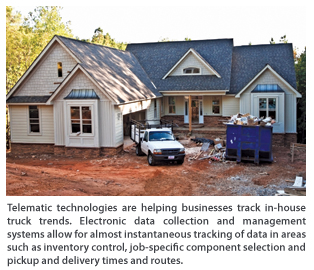 Making sure that you are using the right size vehicle for each application is a good starting point for optimizing vehicle productivity. If your trucks are fully loaded at the start of the day, but have to come back for a second load before the end of the shift, you may want to consider using larger trucks. This could save time and reduce total vehicle mileage. On the other hand, if your trucks start with a partial load and do not need to return during the day, consider using smaller, more fuel-efficient vehicles. Another right-sizing opportunity is to replace three trucks that operate in the same general area with two larger trucks. You may be able to equip the larger trucks with material-handling devices to speed up cycle times, making it possible to accomplish the same tasks in the same amount of time with one less vehicle.
Making sure that you are using the right size vehicle for each application is a good starting point for optimizing vehicle productivity. If your trucks are fully loaded at the start of the day, but have to come back for a second load before the end of the shift, you may want to consider using larger trucks. This could save time and reduce total vehicle mileage. On the other hand, if your trucks start with a partial load and do not need to return during the day, consider using smaller, more fuel-efficient vehicles. Another right-sizing opportunity is to replace three trucks that operate in the same general area with two larger trucks. You may be able to equip the larger trucks with material-handling devices to speed up cycle times, making it possible to accomplish the same tasks in the same amount of time with one less vehicle.
If you are experiencing excessive downtime and on-the-road breakdowns, your trucks may be overloaded or improperly designed for the application. This not only destroys your fleet’s productivity, it is also dangerous and expensive. Take the time to learn how to properly match your trucks to your application before buying another vehicle.
Route Optimization
If your fleet makes route deliveries and/or pickups, closely review the routes your drivers are following. In many cases, routes just happen over a period of time and may not be efficient. If you are technology-savvy, you may even consider using computer-based modeling programs such as What’s Best to model your vehicle’s routes. Remember to consider combining existing routes by using larger or more efficient trucks.
Truck Body and Equipment Designs
Specialized truck bodies, mounted equipment and other accessories designed to make work trucks more productive are constantly being developed and improved. If you haven’t updated your components in awhile, you may not be using the best ones available for your application. Before you buy another truck, make a detailed review of your current and projected work truck requirements, and then determine if there are newer products available that could improve your trucks’ productivity.
If you are not currently using specialized bodies or equipment, see what’s available. A combination of increasing labor costs and the availability of new components may make it worthwhile to upgrade to more specialized truck bodies and equipment. Take the time to research what’s available. This may mean talking to your local truck equipment provider, doing research on Web sites such as www.NTEA.com and/or attending a truck equipment trade show such as The Work Truck Show, where you can compare what’s new from a number of manufacturers all in one place.
Reducing Stationary Fuel Consumption
One measure of productivity is the quantity of assets utilized to perform a specific task. This may be measured in hours of labor per unit, total cost per unit or, in the case of a work truck, gallons of fuel burned per task. The Department of Energy has estimated that the typical Class 6 to 7 work truck has an equivalent fuel economy of around six miles per gallon. In many cases, a significant portion of that fuel is burned in non-productive operation (idling) or while operating engine-driven auxiliary equipment (PTO operation). Anything you can do to reduce this type of engine operation will have a direct impact on your fleet’s productivity. In addition, many cities, counties and even states have implemented idling restrictions for commercial vehicles. Expect even more areas to adopt these restrictions in the future.
- Idle Reduction Technology — Many newer trucks can be programmed to automatically shut down the engine after a specified period of idling. Aftermarket systems are also available, as well as systems that will automatically start an engine during PTO operations when there is a demand for power and then shut it down after a specified period of no demand. In some operating cycles, these systems can produce significant reductions in non-productive engine operation.
- Alternative Auxiliary Power Sources — The need for auxiliary power at a jobsite does not necessarily mean that you have to operate your truck’s engine for extended periods of time. Many soft hybrid technologies provide auxiliary power on demand. These include electric PTOs (E-PTOs), battery-powered static inverters to provide commercial-quality AC electric power (120- and 240-volt) and auxiliary engine-driven systems. Auxiliary engine power systems are available to provide commercial-quality electricity, welding capabilities, hydraulic power, compressed air and even to support truck hotel loads (heating and cooling).
- Cab Hotel Loads — In addition to the auxiliary engine-driven systems mentioned above, electric-powered (battery) systems are also available to support cab heating and cooling for shorter periods of time. Fuel-fired systems maintain not only cab heat, but also keep the engine water jacket warm and even pre-warm hydraulic fluids. These systems are very effective in cold climates and can maintain acceptable temperatures for extended periods of time while consuming a small fraction of the fuel that would be burned by operating the truck’s engine.
Beyond the Truck
Looking beyond the truck itself, anything you can do to make your drivers more productive will help them accomplish more work in the same period of time. In certain operating and drive cycles, the use of telematics (including GPS systems) can significantly increase productivity. At the same time, some systems will allow you to monitor vehicle operation and identify potential problems before they result in on-the-road failures.
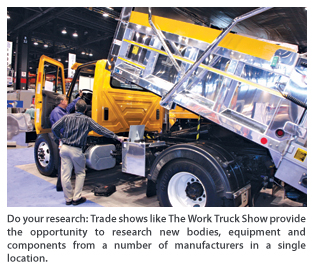
All of these systems have been mainstream technologies for companies such as FedEx and UPS for a number of years. These technologies have proven effective and their cost has lowered, making them affordable to almost any company that could benefit from their use.
Productivity Can Help Green Your Fleet
There is no denying the fact that “green” is in. Many fleets have incorporated some type of mandate or purchasing philosophy to increase the green elements within their operations. Many of the same steps that improve fleet productivity also can contribute to greening your fleet. Using smaller vehicles, improving fuel utilization, reducing idle time and using lighter weight equipment for upfits all contribute to reducing fuel consumption and greenhouse gas emissions.
Over time, more productive vehicles will increase your overall fleet efficiency and save you money. As an added benefit, you may also be able to add a green story to your operation.
Robert Johnson is director of fleet relations for the National Truck Equipment Association (NTEA). For more information, visit www.ntea.com.
Driver-Driven Crane Vehicles
Select the Crane Truck that Fits the Operator Behind the Wheel
By Russell Nielsen
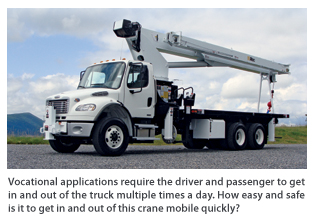
“A crane truck is a business tool, so every component should be designed to help businesses increase productivity and profitability,” says Melissa Clausen, director of product marketing for Freightliner Trucks. And according to Clausen, there is a direct correlation between driver comfort and productivity. “When drivers are comfortable and happy in their vehicles, they are more productive,” she says. “Employee turnover is lower, which ultimately benefits the entire company.”
Comfort and Safety Combined
“A truck is a driver’s home for eight hours a day or more, so look for a truck that prioritizes driver comfort, safety and convenience,” says Clausen. When looking for a crane truck, consider the following features:
- Windshield: With crane trucks navigating both construction sites and urban neighborhoods, an extra large windshield maximizes driver visibility to avoid potential hazards.
- Entry/Egress: Vocational applications often require the driver and passenger to get in and out of the truck multiple times a day. Low step-in height with slip-resistant stairs, and large door openings with strategically placed exterior and interior grab handles reduce fatigue for drivers who make frequent stops.
- Noise reduction: Jobsites and city streets are loud. Look for extensive interior insulation to reduce noise and provide additional protection against the elements.
- Roominess: Elbow and leg room, plush seating and ample belly room add to the driver’s experience and comfort.
- Steering: A foot-controlled release on an adjustable steering column lets both hands stay on the wheel while the driver adjusts for his/her personal comfort.
- Ergonomic features: Easy-to-read, backlit-gauges, controls that are within reach, plenty of storage and wide cup holders are just a few of the features that make the driver more comfortable.
- Stepping Outside
It’s not just the inside of the crane truck’s cab that contributes to the driver experience. Well-thought out exterior designs and quick access to critical maintenance points can have a direct impact on productivity. Clausen notes some of the equipment to look for:
- Bumpers are often dinged on the job, so consider a truck with a multi-piece bumper. If the bumper is damaged, only that section needs replacing, reducing overall costs and downtime.
- A hood with integrated splash shields that lift out of the way and opens easily, resulting in better accessibility.
- Strategically placed components that are frequently inspected, to allow for faster repairs and adjustments.
- See-through fluid reservoirs to reduce the time spent checking fluid levels.
- A removable floor section that allows access to the transmission without removing the floor covering.
- “Increased efficiency leads to increased profits, so select a truck that is easy to service and maintain,” says Clausen. “The result will be more time on the road and a positive impact on the bottom line.”
Russell Nielsen is a vocational sales manager for Freightliner Trucks, based in Ft. Mill, S.C.
Load Concentration
Not All Trailers Are Created Equally
By Mark Kulyk
There is confusion in the marketplace about what trailer capacity really means. Questions such as: Why is there sometimes a significant price difference between two identical capacity trailers? One important factor that is often overlooked is the load concentration of the trailer deck. Load concentration relates to the design engineering assumption that is behind the trailer’s stated capacity. Of note: There is no industry standard by which a trailer’s capacity is established. Each trailer manufacturer sets its own standard to determine the load concentration.
Engineers begin by deciding what is most likely to be hauled on the trailer, which is expressed as a weight that is compared with the trailer’s deck length and wheelbase. Whether this theoretical load is a block or self-supporting load is also a factor. These engineering decisions determine the size and strength of the main beams and, most importantly, the performance level of the finished trailer.
For example, two trailers from two different manufacturers rated to carry 55 tons may not be equal because of different engineering decisions. A trailer with a higher load concentration, designed to carry a block load over a shorter distance of the deck, will benefit a customer who wants a long-lasting trailer or a trailer that performs well, no matter what 55-ton load is carried. The trade-off is in the empty weight of the trailer. A trailer with a higher load concentration tends to be heavier because the beams are large. Higher strength steel (i.e. 130,000-kpsi yield steel) helps to keep the weight lower while maintaining the maximum load concentration.
Why is this important? The fact is that a trailer designed to carry a 110,000-lb load concentrated in 12 ft, 6 in., such as a bulldozer, has a much stronger deck than a trailer designed to carry a 110,000-lb, self-supporting load with two contact points that are 12-ft, 6-in. apart, such as a wheel loader. The trailer with concentrated load is approximately 14 percent stronger than the one designed for a self-supporting load. Yet, both are called 55-ton capacity trailers, and the price can be thousands of dollars different.
The bottom line: Customers who are knowledgeable about trailer load concentration will ask the right questions and buy the trailer that will work best for their equipment.
Mark Kulyk is the president of Rogers Brothers Corp., based in Albion, Penn.
Shine On
Illuminating Maintenance for Trailer Lighting Systems
By Chris Gottschalk
Communication on the road is imperative for professionals to navigate to the next jobsite, hauling equipment, moving product and spoils and just driving to lunch. Lights and signals on trailers help communicate to other drivers on the road, ensuring safe progress. If a trailer’s brake lights or tail lights go out while driving, the driver probably won’t notice for a while. However, other drivers will notice immediately, and you will definitely be aware that something’s wrong if you get rear-ended.
The first step in maintaining your trailer’s lights is to test them. This stage requires two people — one person sits in the tow vehicle and activates the lights, and the other person confirms the lights work. Test each of the lights separately, then activate two or more systems at once. This may seem like overkill, but consider how often your trailer’s lights are used together such as slowing down to make a turn at night.
Obviously, the lights should come on when activated, but watch for other problems. Make sure the lights don’t look dim. Also make sure they don’t weaken or flicker when the turn signal or brakes are activated. After the lights are tested, you’ll know if your trailer has any lighting problems.
After testing the lights, examine the wiring harness before you look at the individual lights. Make sure the trailer’s electrical system is first disconnected from your tow vehicle. If your trailer has a separate electrical system, make sure its power source is disconnected as well. Then, starting at the trailer’s connector, follow the wiring harness. The wires in the wire harness are usually held together with nylon zip ties, although some trailer companies go one step further and enclose their wires in a rubber jacket to provide extra protection against wear and tear. Keep an eye out for any points where the zip ties have deteriorated, letting the wires swing loosely. Examine the wires individually, particularly in the loose areas, to make sure the insulation is intact. If any wire has cracked or there are weak areas, use electrical tape to reseal them. You can also reseal any weak areas in a rubber jacket harness with electrical tape, but don’t worry about the wires inside unless the harness has been torn enough to expose them. If wires have been exposed, reseal the individual wires as needed before sealing up the harness itself. Use zip ties to rebundle any loose wires, although electrical tape may also suffice in a pinch.
Check the ground wires on both the trailer and the tow vehicle while you’re examining the wire harness. Trace the ground wire on the trailer from the connector and make sure it is connected securely to a clean surface on the trailer, free of paint, rust or undercoating. The tow vehicle’s ground wire should also be secured to a similarly clean surface on the vehicle. Do not secure a trailer or tow vehicle’s grounding wire to the hitch or ball!
Now that the wiring harness is in good shape, move on to the individual light bulbs and sockets after you’ve examined the wiring. Replace any burned out bulbs and make sure the socket is clean and free from corrosion. If the bulb sockets need to be cleaned out, do so using a small wire brush or steel wool. Once the socket is clean and a new bulb has been fitted, smear a little dielectric waterproof grease around the bulb’s base. This will stop any stray moisture from getting into the electrical system. After you’ve finished, locate the trailer’s fuse box and replace any blown fuses.
Finally, inspect the trailer connector. Clean off the pins using a wire brush, steel wool or fine sandpaper. Then put some of the dielectric waterproof grease on the connector to help prevent moisture from getting in. Make sure not to get any grease on the plugs or slots themselves, as it is a nonconductor. While some people argue that the grease will not affect the electrical connection, it is better to take the time and not coat the metal connectors rather than risk a bad or temperamental connection.
After completing your inspection, reconnect the trailer’s electrical system and hook up the trailer to the tow vehicle. Bring your friend back and thoroughly test the lighting systems again. Note that if you can’t get someone else to help, you can do a cursory check by yourself. You can leave on your turn signals while you see if they work, and you can check the four-way lights and tail lights the same way. Checking brake lights, though, pretty much requires another person.
Your trailer’s lights are an extremely important safety feature. With regular maintenance, they’ll keep you and your cargo safe for the life of the trailer.
Chris Gottschalk is a Web content manager for Featherlite Trailers, based in Cresco, Iowa.
Cool Runnings
Diversify Commercial Operations with Truck, Plow and Snow Removal
By Dan Tigges
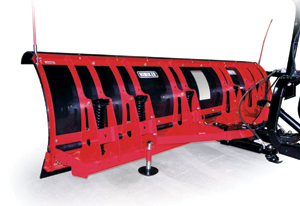
If you’re a contractor, you already have the base (the truck), so here are a few things to keep in mind when deciding how to outfit your truck and choosing the right snowplow for your vehicle. In selecting the right plow, the answer largely depends on what type of truck you will be using — the bigger the job, the bigger the plow, the bigger the truck. To select the perfect plow for your needs, there are a number of things to consider: plows can start at widths of around 6 1/2 ft and go up to 9-ft wide sizes; most compact/mid-size trucks will have a blade width of 7 ft or less; half ton trucks will have blades in the 7 to 7 1/2-ft range; and lastly, three-quarter ton trucks and larger use blades from 7 1/2 to 9 ft.
The next thing to consider after the size of blade is the style. This depends on the purpose — will you be doing residential or commercial plowing? You can choose from straight blades or V-shaped blades, which can be adjusted to scoop and move snow rather than simply push it out of the way. Additionally, there are systems available that exert extra down force on your blade for heavy scraping and back-dragging.
You will also have to decide on the material of your blade — steel or plastic? Steel blades offer more weight for down force, while at the same time, some of the polyethylene are lighter and offer clear plastic blades for better vision while plowing. And of course you have other accessories like plow wings, snow shields, salters, spreaders, rear plows and optional lighting to consider as well.
All this information will help you decide which plow suits your truck based on overall weight and the gross axle weight rating of your specific vehicle. It will also help you decide which mounting hardware you’ll need and what type of special equipment may be required for your truck.
Now that you have plow specifications selected, there are some additional things you need to consider in your truck choice. Many manufacturers offer specific snowplow or heavy-duty packages that take into consideration the added weight and capabilities needed for snowplowing.
These packages may include things like heavy-duty frames made from high-strength steel for greater durability and higher weight carrying capacities, improved ride and handling and access mounting holes to accommodate common customer and aftermarket products like plows and trailering items. Also, newer independent front suspensions offer greater front axle weight ratings, shocks, frame bumpers and adjustable trim heights for improved load management. Not to mention auxiliary wiring harnesses that make your plow and lighting options easier to install. Rear suspension upgrades designed to support greater rear gross axle weights for equipment like salters and spreaders may need to be considered.
What about engine and powertrain options for your plow truck? Both gas and diesel engine options are available from most manufacturers. Many of the newer diesel engines offer better fuel economy, quicker starts and are much quieter than their predecessors — plus, they provide superior torque for plowing and some don’t require block heaters until it gets to 20 degrees below Fahrenheit.
When it comes to transmission choices, trucks are available with four-, five- and six-speed automatic transmissions; however, it is important to consider that the six-speed transmissions offer a lower first gear option, which could be helpful depending on your plowing needs. Also check to see if transmission and engine coolers are standard equipment or available as an add-on to your vehicle.
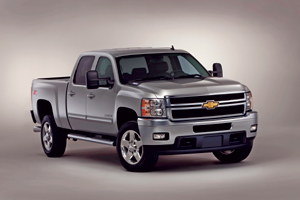
So whether you are looking at outfitting your current truck or buying a new one to address your local snowplowing needs, keep these items in mind when making your purchase decisions and get your return on investment. For more information, visit your truck dealer and snowplow installation professional.
Dan Tigges is the marketing and product manager of full-size trucks at General Motors Fleet & Commercial Operations, based in Detroit.
Snowed In
New Designs to Winter Maintenance Equipment Keep Contractors Productive and in the Cab
By Barry Truan
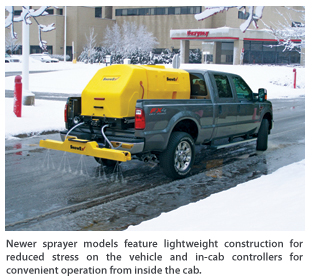
Lighten Up
Perhaps the biggest advancement in recent years has been constructing equipment with lightweight, yet durable materials to reduce weight concerns. These significant weight reductions are beneficial to both the operator and the truck. Less weight from equipment equals reduced stress on the truck’s ball joints and the vehicle itself, resulting in a truck that will last longer and require less maintenance. A contractor can spend more time in the cab — plowing snow, spreading salt or spraying brine — and less time outside repairing the truck.
One example is the use of a material called Lexan. Originally used in the visors of space helmets, Lexan has become a popular material in plows for good reason — it weighs much less than traditional heavy-gauge steel. Consider the effect on a 7 1/2-ft plow. A steel-constructed unit of this size would weigh roughly 850 lbs. A Lexan-constructed model could weigh up to 90 lbs less — approximately 10 percent lighter — than a similar size, steel-built plow.
Many manufacturers are also trending toward polyethylene, another lightweight, yet durable material. For a typical salt and sand spreader, polyethylene construction can reduce its empty weight by as much as 40 percent when compared with a similar steel-built model. These significant weight reductions not only increase the truck’s longevity, but also give the operator more flexibility in terms of the amount of equipment he or she can carry or attach without exceeding the gross vehicle weight rating.
Spreading Their Wings
Speaking of lighter weight, imagine being able to add 20 in. of blade width to a plow, while still keeping weight to a minimum — all while pushing snow more efficiently. Thanks to the launch of plow wings in the past five years, this is now possible. Plow wings eliminate the need to angle a plow in deep snow by “cupping” the ends of the unit, which encourages snow to roll off both sides. A contractor doesn’t have to spend time angling the plow, and the added length means the unit can clear more snow per pass, further increasing efficiency. In fact, it’s estimated wings can reduce plowing time by up to 50 percent. While wings are a perfect illustration of one of the more recent developments in equipment, this next feature is an example of a newer enhancement to an established plow technology.
Road Trip
Plow manufacturers have been including a feature called a “trip edge system” on plows since the mid-1990s. Its main function is to lower the impact force to the plow and eliminate potential damage to it and the truck when a trip hazard (such as a sewer cap or speed bump) is encountered. The unit features spring mounting, which tips the plow forward — also called “tripping over” — to avoid a hazard. A 4- to 6-in. cutting edge is attached to the bottom of the plow to further lessen impact.
This technology originally came with a drawback: The entire plow would engage in the tripping action. The bottom portion of plowed snow would be left behind, and the contractor would have to go back and re-plow. With newer advancements on some plows, just the cutting edge folds under when a trip hazard is encountered. The snow pile stays with the plow and the contractor doesn’t have to go back and re-clear lost snow. This simple enhancement greatly improves efficiency during the workday. But the jobsite isn’t the only place efficiency is important. For many, a work truck doubles as an everyday vehicle, so the ability to attach and remove equipment easily is imperative.
Easy On, Easy Off
Roughly 10 years ago, a plow, its lights and hydraulics all needed to be separately mounted. If a contractor wanted to use his truck for a quick trip to the supermarket, he would have to remove the plow and also the lights and hydraulics. Not only that, the process was time consuming and very difficult for one person. With today’s newer mounting brackets, plow mounting and dismounting is faster and easier, and the plow and its accessories are attached and removed as one unit.
This process has also been improved with current spreader technology. Consider a contractor who frequently needs his pickup for towing purposes. With some models, the spreader assembly must be unbolted or the entire spreader must be removed from the truck’s bed before accessing the receiver hitch. Many manufacturers offer new designs to make this process easier — one of them being SnowEx. With the company’s Quick Pin Hitch system, a contractor simply removes one pin and the spinner assembly to expose the truck’s hitch. The conversion takes place in seconds and can be done by one person. These features are extremely beneficial for the many contractors who have multiple uses for their trucks. However, contractors still spend countless hours in these vehicles so many demand a higher level of comfort.
Stay in Control

First, being able to control all equipment from inside the cab is a major benefit. Take sprayers for example. Previously, a contractor would have to park, exit the truck and venture out in the cold to manually activate or adjust the sprayer. Today’s new in-cab control systems allow the operator to set liquid flow rates and activate the sprayer, all from the warmth and comfort of the cab. In-cab controls are also available for plows and spreaders.
Second, when in-cab controllers were first introduced, they weren’t very user-friendly, and many were only offered in the form of toggle switches. After several hours of flipping the switches, operators would be left with sore fingers and indents from the repeated on-and-off motion. Fast-forward to the present when you can choose from several easy-to-operate controllers. Options include joysticks, pistol-grip pads or simple rectangular pads that can be mounted to a dashboard or attached to the driver’s leg. All of the available options let a contractor personalize his control setup, resulting in the most comfortable, productive office on four wheels.
For as much time as snow and ice maintenance contractors spend with their trucks, improvements to the equipment — no matter how small — shouldn’t go unnoticed. As engineering becomes more advanced, new features will continue to be implemented. Combine the aforementioned developments with inevitable future enhancements, and the day-to-day operations of these professionals will keep improving. And not a minute too soon… because when a work environment includes below zero temperatures, dangerous wind chills and unpredictable drivers, every extra minute spent inside the cab — and not outside working on the truck and its equipment — is extremely valuable.
Barry Truan is a sales coordinator for TrynEx International, based in Warren, Mich.


Comments are closed here.